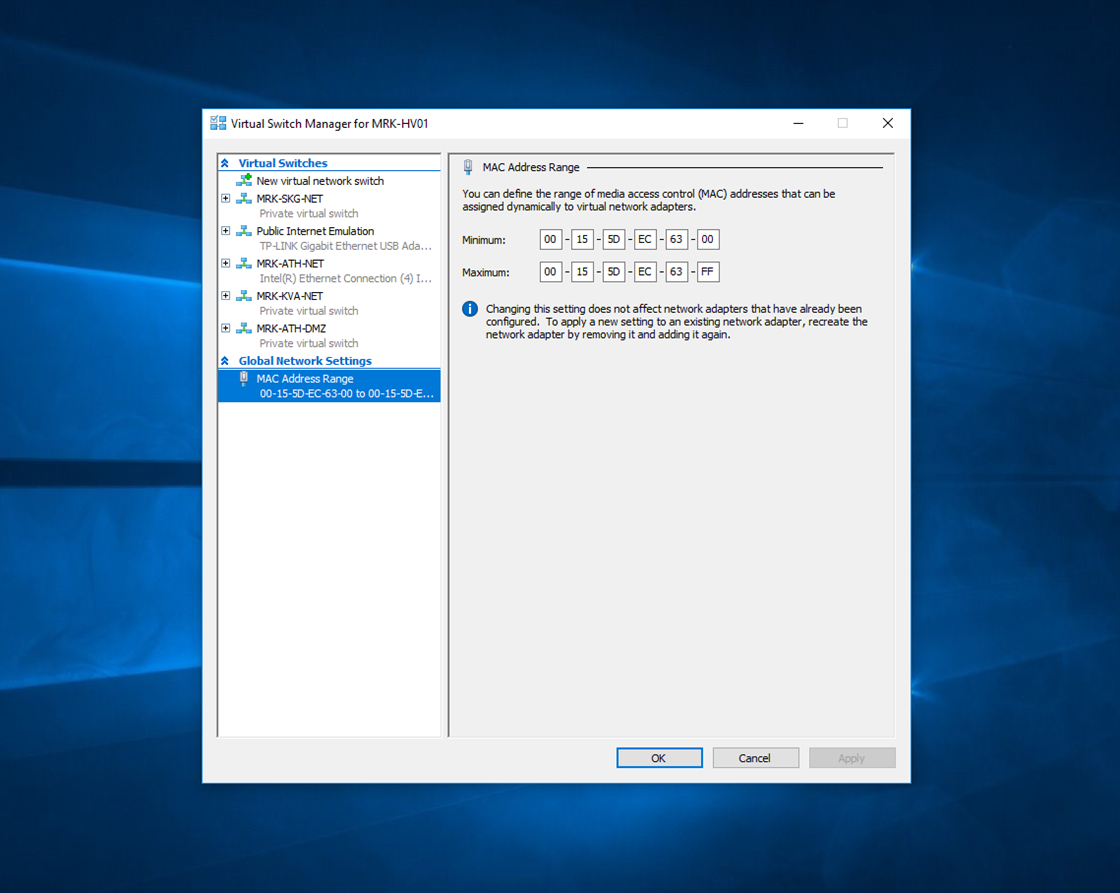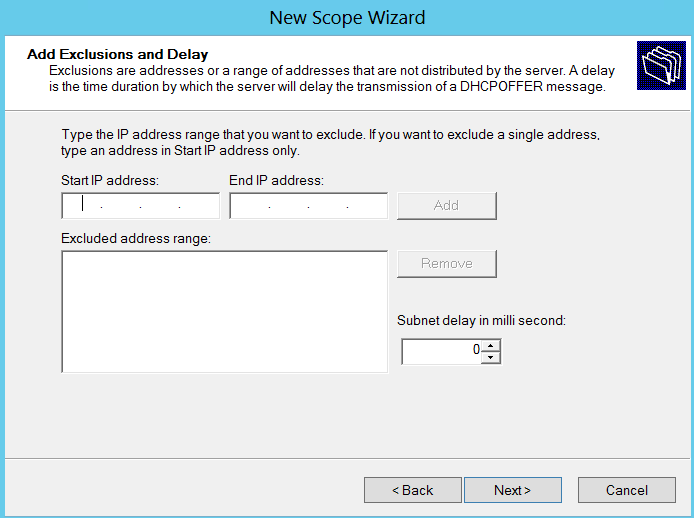

- #VMWARE MAC ADDRESS SCOPE HOW TO#
- #VMWARE MAC ADDRESS SCOPE INSTALL#
- #VMWARE MAC ADDRESS SCOPE SOFTWARE#
The main IPv4 address of a server is the IP that is originally assigned to the server and is configured in the automatic installations.įor IPv6, there is no clearly defined main address. Note: This article is limited to showing you the corresponding Linux commands to illustrate the general concepts.įor systems such as FreeBSD, a different configuration is necessary. You can order additional IPv4 addresses on Robot. I'm not too familiar with Window's-based VPN solutions and don't know if that will work on hosts that have only one interface.All dedicated and virtual servers come with an IPv4 address, as well as a /64 IPv6 subnet.
#VMWARE MAC ADDRESS SCOPE SOFTWARE#
What you are trying to accomplish is a form of "tunneling" and for that, you are best off using Tunneling software (aka VPN software) on the hosts that are hiding the guests. People sometimes do things like this but, by convention, they will force the various endpoints to use non-standard (and agree-upon) port numbers. The host will not receive the packets truly intended for it. The problem here, is that your host could be receiving 8443 traffic for many other valid reasons. I assume the Port features in the VMware NAT setup process will do what you want but, will forward any and ALL traffic sent to the host with that port number to the Guest.

Any/all packets in your network must be addressed to the hosts that your network operator recognizes. If any host in the network sends packets to the Guest, the network will not know which host is responsible for that Guest. PS: If this is worth clicking the Kudo's check box, please do so. Suggest you do Internet search on NATP and NAT to get greater insight. For this reason, NAT can only keep track of the packets that are initially sent by your Guest OS.

If someone on the outside network sends unsolicited packets to the Host that are intended for the Guest, the NAT software won't know if it belongs to the Host or Guest. It's actually called NATP (P=Port Translation). How the NAT software keeps track of the packets and if they belong to the Host or Guest is part of the stateful nature of it's job. When the response from other computers come back to the Host, the NAT software keeps track if the packet really needs to go back to the Guest OS and send it there if needed. This way, the rest of network thinks your Host OS is the one that's sending the packets. The NAT software modifies the outgoing packets and puts the IP address of the host in the source address field of all the packets. When your Guest OS wants to send something, it sends the IP packets to the NAT software. Your Guest OS is given a totally different IP address that is not consistent with, or recognized by the network operators. Your Guest OS is sitting inside (and hidden by) the Host OS. In your case, the host computer has an IP address that is officially assigned through DHCP by the network operators. Virtually all home gateway routers use this (very old and established) technique to connect your home Internet Service Provider to the computers in your home. NAT stands for Network Address Translation. It's great that you persisted and figured it out.
#VMWARE MAC ADDRESS SCOPE HOW TO#
Sadly, I've only been using VMware for a few weeks myself and therefore am not accustomed to giving exact "step-by-step" instructions on how to set the parameters.

#VMWARE MAC ADDRESS SCOPE INSTALL#
You could probably install a route in your host OS to point to your guest VM but, I suspect the owner of 10.179.89.0 will either not like that or will ignore the route because they are not running a routing protocol at that level of the network. This is because the guest VM is "hiding" behind a different subnet and the VM's host is doing the NAT conversion. If some other computer in your network happens to know the name or IP address of your guest VM, that computer will not likely be able to communicate with your guest VM in an unsolicited manner. You will have "full duplex" communication provided your guest VM initiates the communication. With NAT (Network Address Translation) the guest VM will be able to send data out and responses can come back. 254.0 (notice 3rd number in bold) with a mask of 255.255.255.0 or use the value that the Network Editor suggests the first time you open it. On the network configuration, don't make the subnet IP on the same as the host network. NAT needs to translate across unlike subnets. On the network Editor, I think you changed the subnet IP to the same as your host network.


 0 kommentar(er)
0 kommentar(er)
